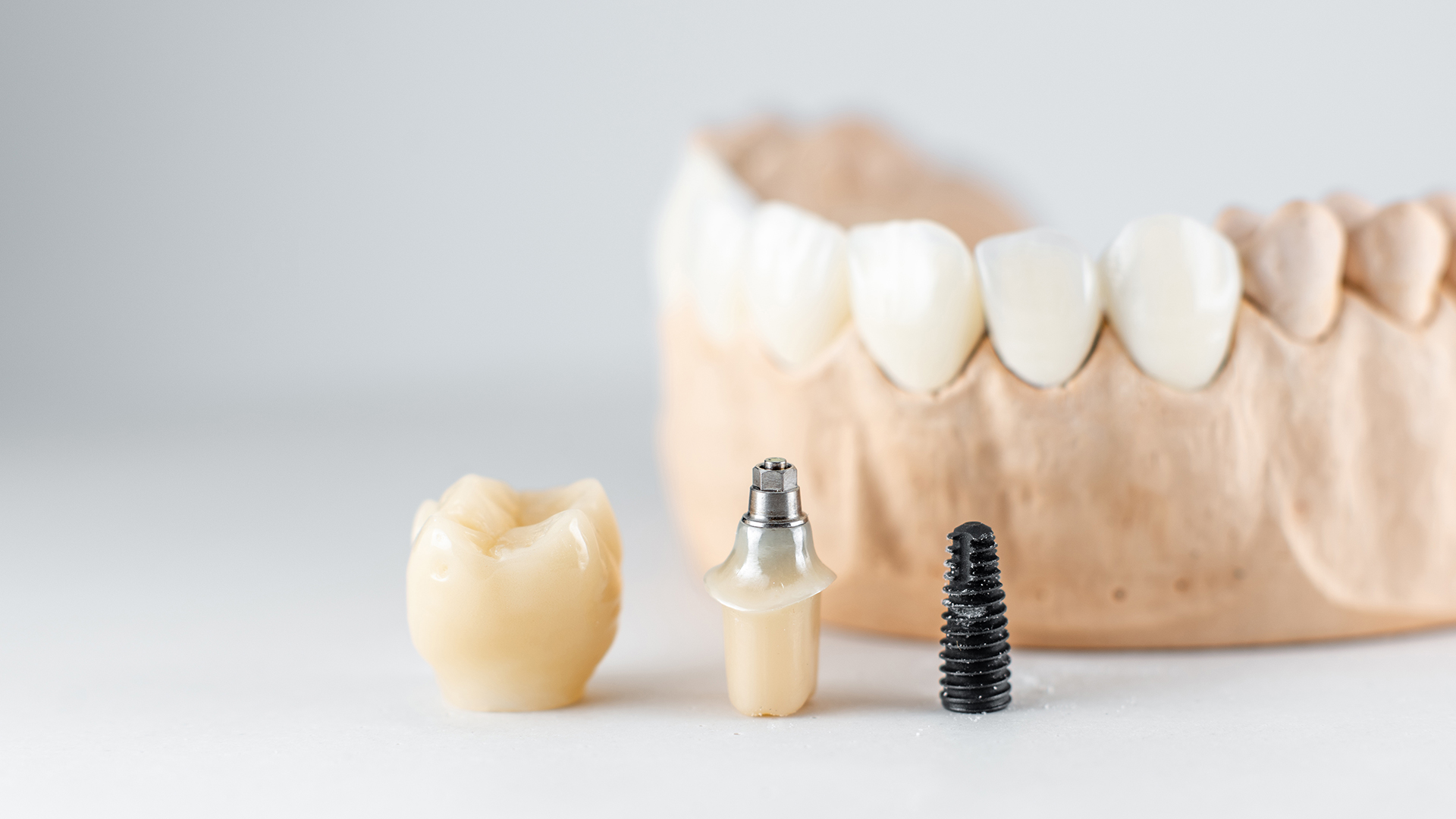
What is a dental crown?
Benefits of dental implants
Types of dental implants
Porcelain fused to metal
Porcelain
Zirconia
gold
Emax
Dental care
Brushing and flossing teeth
Avoid bad habits
Enjoy food wisely
Make regular visits to your dentist
Conclusion
Source
Dental Implants
Losing one or more teeth is usually not a major concern for children, as it is a natural part of losing their non-permanent baby teeth, which permanent teeth will replace. However, losing a permanent tooth due to an accident or trauma is a major problem. Unlike baby teeth, permanent teeth do not grow back, which can lead to difficulties in chewing food and aesthetic issues, especially if the missing tooth is a front tooth. In the past, tooth loss was difficult to treat, but now there are many solutions available, such as dental implants.
What is a dental crown?
One of the main risks you may face is losing a tooth permanently, but a dental crown is one of the best options for maintaining your dental health. A dental crown is a custom-made cap designed to cover a damaged tooth completely. These crowns restore the size, shape, and appearance of the tooth, making them ideal for teeth damaged by decay or trauma.
Dental crowns can be made from a variety of materials, such as ceramic (porcelain), metal, or a combination of the two. The process of fitting a crown involves shaping the tooth to fit the crown, taking an impression to create the crown, and then permanently cementing the crown onto the tooth.
Dental crowns enhance a tooth by covering it, restoring its shape, strength, and size, and improving its appearance. A crown can last for more than 25 years, with an average lifespan of 15 to 20 years. However, the longevity of a crown depends on the dental care you maintain and your oral hygiene. Additionally, if your bite (occlusion) is incorrect, there is a higher risk of the artificial crown breaking or becoming damaged over time.
Benefits of Dental Implants
Dental implants offer many benefits, including:
- Restoring broken or damaged teeth
- Protecting teeth after root canal treatment
- Covering dental implant abutments
- Preventing weak teeth from breaking or holding parts of a cracked tooth together
- Restoring severely worn or broken teeth
- Using large fillings to strengthen and cover teeth when there is little tooth structure remaining
- Keeping dental bridges in place
- Covering severely discolored or stained teeth
- Covering dental implants
- Improving the appearance of teeth
Types of Dental Implants
Dental crowns come in a variety of types, each made from different materials. Types of dental crowns available include:
- Porcelain-bonded-to-metal
- Porcelain
- Zirconia
- Gold
- Emax
Each material has been proven to be effective and capable of providing excellent results. However, each has unique properties that make it more suitable for a patient’s specific needs.
Below, you’ll find information about the different types of dental crowns along with their pros and cons. Read on to decide which type best suits your needs.
Porcelain-bonded-to-metal
One of the most popular types of dental crowns is the porcelain-bonded-to-metal (PFM) crown, which has been the industry standard for over 50 years and produces consistent results. PFM crowns combine the beautiful qualities of porcelain with the durability and longevity of metal. The metal alloy framework for these crowns is made up of metals including nickel, chromium, and palladium, although the exact metals used can vary depending on the dental lab and manufacturer. To hide the underlying metal and give the framework a natural appearance, porcelain is bonded to the outside of the metal.
Porcelain
Traditional porcelain-bonded-to-metal (PFM) crowns can be replaced with these types of dental crowns. These crowns are made entirely of porcelain without a metal frame, unlike PFM crowns. The exceptional aesthetic qualities of porcelain crowns have led to their increasing popularity.
Zirconia
Zirconia, a ceramic material, is one of the best materials that can be used to replace dental crowns. This metal-free material has excellent aesthetic properties and is highly biocompatible. It is also extremely strong and resistant to breakage.
Gold
These crowns are made of a gold composition. However, instead of being made entirely of gold, they are alloyed with other metals such as palladium and chromium. They are less expensive to manufacture due to their composition, which also maintains their attractive qualities.
Gold crowns are known for being strong and long-lasting. However, their unnatural color is a major drawback, making them less common today.
Covering a crown with porcelain can address the color problem. These crowns work similarly to porcelain fused to metal (PFM) crowns, but they can cause sensitivity due to the underlying gold structure. Additionally, they require more tooth preparation than regular gold crowns.
There are also crowns made entirely of an alloy of other metal elements, except for gold. These metal crowns have similar properties to gold crowns but are gray.
Emax
Crowns made of lithium disilicate, a type of metal-free porcelain, are known as Emax. These crowns have a natural appearance and are known for their superior quality.
See also: What is dental calculus cleaning?
Follow us on Instagram The Gentle Dentist
source
- https://my.clevelandclinic.org/health/treatments/10923-dental-crowns
- https://www.webmd.com/oral-health/dental-crowns
- https://www.healthdirect.gov.au/dental-crown-procedure
- Myth or Fact? Everything You Need to Know About Teeth Whitening at Home
- Dental Implants: The Perfect Solution for Tooth Loss and Restoring Self-Confidence
- Secrets of a Healthy Mouth: Daily Habits That Protect Your Teeth from Cavities
- Thumb sucking in children and its effect on dental health.
- Benefits of regular teeth cleaning

